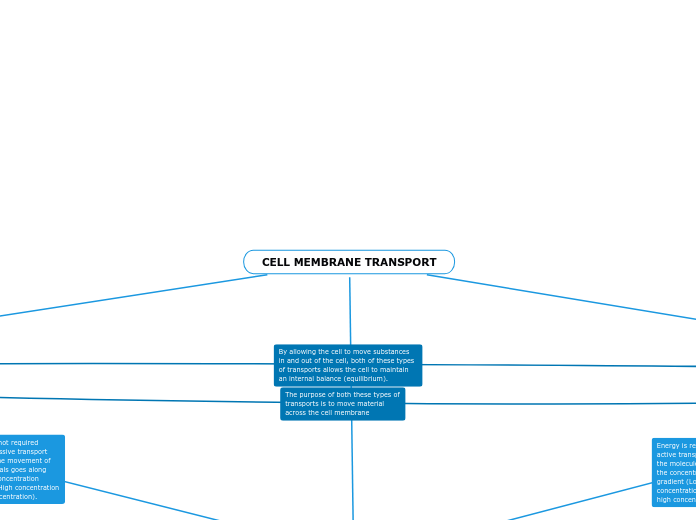CELL MEMBRANE TRANSPORT
Passive Transport
The movement of substances
into or out of a cell without
the expenditure of energy.
Active Transport
The movement of substances
into or out of a cell with
the use of cellular energy.
Primary Transport
Substances carried in the primary transport are Na+, K+, Mg2+, and Ca2+.
Sodium-Potassium Pump
How does the Pump Operate?
The sodium-potassium pump is driven by the Na⁺/K⁺-ATPase enzyme. The pump uses energy from ATP to transport substrates (sodium and potassium) across the cell membrane.
The three Na⁺ ions, located inside of the cell, binds to the active site of the transport protein (ATPase). As the substrate binds to the enzyme's active site, the enzyme-substrate complex is formed. Meanwhile, the ATP binds to the enzyme's allosteric site causing for a change in the shape of the protein. This allows for a ionic transport across the membrane. The change in shape of the carrier protein allows the release of the Na⁺ ions to the outside of the cell. This exposes new active sites for the K⁺ ions. The K⁺ binds to the new active sites of the enzyme, forming another enzyme-substrate complex. When a new ATP binds to the enzyme's allosteric site, the K⁺ ions are released into the cell. This once again exposes the active sites for Na⁺, allowing the cycle to start again.
Na⁺/K⁺-ATPase enzyme plays a huge role in maintaining various cellular functions in the human body. If the enzyme is met with inhibition, there can be devastating pathological effects that can cause many problems. This is because inhibition can cause high intracellular Na⁺ ion levels and an increase in Ca2+through the Na⁺/Ca2+exchanger.
Secondary Transport
Symporter
Antiporter
Bulk Transport
Endocytosis
Phagocytosis
Pinocytosis
Receptor-Mediated
Endocytosis
Exocytosis
Endocytosis is often used to get rid of waster made by the cells. It is also employed to transport vital material produced by cells outside of the cells.
Adenosine triphosphate (ATP)
Structure of the Cell Membrane
Composed primarily of three things
Phospholipids
Phospholipids have two parts: a head and two tails. The head is composed of phosphate molecules that are hydrophilic. The two tails are composed of fatty acid chains that are hydrophobic. Cells have a phospholipid bilayer: two layer of phospholipids.
The hydrophilic regions of the phospholipids form hydrogen bonds and ionic bonds with its aqueous environment. Other, weaker forces stabilize the bilayer of the cell membrane.
Proteins
Integral and peripheral proteins can be found on the surface of the phospholipid bilayer. Integral proteins aid in transporting different molecules across the cell membrane. They can be found sticking out on either end. Peripheral proteins do not extend across the membrane. They help with transport or communication.
Cholesterol
Cell membrane also contains cholesterol that is randomly distributed across the phospholipid bilayer. Cholesterol helps the bilayer remain fluid in different environmental conditions.
